Tengpa Anye (R) cleans a lion dance prop at a primary school in Xobando Town of Lhorong County in Qamdo City, southwest China's Xizang Autonomous Region, Jan. 19, 2024. Lhorong County, with an average elevation of about 3,700 meters, was once an important stop along the ancient Tea Horse Road and a significant channel for Tibetan-Han exchanges. Locals in Xobando Town injected elements of Tibetan folk dances into the Han lion dance introduced to the town in early years, and created a new performing art -- Xobando lion dance. Tengpa Anye, 69, who began to learn lion dance from his father at 13, is an inheritor of Xobando lion dance art. In the past, Tengpa had to make lion dance props by himself because the ready-made ones were unaffordable. Nowadays, thanks to improved living conditions and governmental supports, Tengpa and his students have not only access to professionally prepared props but also opportunities to appear at major performance events. No longer an agile performer due to his age, Tengpa is devoted to training younger Xobando lion dancers. He has been offering a hobby lecture on the lion dance at a primary school in Xobando since 2015. The Xobando lion dance bears witness to the history of exchanges and integration among diverse ethnic groups in Xizang. "By teaching the lion dance, we are passing on the spirit of ethnic unity," Tengpa said. (Xinhua/Sun Fei) Children have fun with a lion dance prop at a primary school in Xobando Town of Lhorong County in Qamdo City, southwest China's Xizang Autonomous Region, Jan. 19, 2024. Lhorong County, with an average elevation of about 3,700 meters, was once an important stop along the ancient Tea Horse Road and a significant channel for Tibetan-Han exchanges. Locals in Xobando Town injected elements of Tibetan folk dances into the Han lion dance introduced to the town in early years, and created a new performing art -- Xobando lion dance. (Photo by Tenzin Nyida/Xinhua) Tengpa Anye (R) instructs students to perform lion dance at a primary school in Xobando Town of Lhorong County in Qamdo City, southwest China's Xizang Autonomous Region, Jan. 19, 2024. Lhorong County, with an average elevation of about 3,700 meters, was once an important stop along the ancient Tea Horse Road and a significant channel for Tibetan-Han exchanges. Locals in Xobando Town injected elements of Tibetan folk dances into the Han lion dance introduced to the town in early years, and created a new performing art -- Xobando lion dance. (Xinhua/Sun Fei) Tengpa Anye (L) plays the drum as his students perform lion dance at a primary school in Xobando Town of Lhorong County in Qamdo City, southwest China's Xizang Autonomous Region, Jan. 19, 2024. Lhorong County, with an average elevation of about 3,700 meters, was once an important stop along the ancient Tea Horse Road and a significant channel for Tibetan-Han exchanges. Locals in Xobando Town injected elements of Tibetan folk dances into the Han lion dance introduced to the town in early years, and created a new performing art -- Xobando lion dance. (Xinhua/Sun Fei) Tengpa Anye plays the drum to accompany lion dance at a primary school in Xobando Town of Lhorong County in Qamdo City, southwest China's Xizang Autonomous Region, Jan. 19, 2024. Lhorong County, with an average elevation of about 3,700 meters, was once an important stop along the ancient Tea Horse Road and a significant channel for Tibetan-Han exchanges. Locals in Xobando Town injected elements of Tibetan folk dances into the Han lion dance introduced to the town in early years, and created a new performing art -- Xobando lion dance. (Photo by Tenzin Nyida/Xinhua) Students of Tengpa Anye perform lion dance at a primary school in Xobando Town of Lhorong County in Qamdo City, southwest China's Xizang Autonomous Region, Jan. 19, 2024. Lhorong County, with an average elevation of about 3,700 meters, was once an important stop along the ancient Tea Horse Road and a significant channel for Tibetan-Han exchanges. Locals in Xobando Town injected elements of Tibetan folk dances into the Han lion dance introduced to the town in early years, and created a new performing art -- Xobando lion dance. (Photo by Tenzin Nyida/Xinhua) Tengpa Anye (R) instructs students to perform lion dance at a primary school in Xobando Town of Lhorong County in Qamdo City, southwest China's Xizang Autonomous Region, Jan. 19, 2024. Lhorong County, with an average elevation of about 3,700 meters, was once an important stop along the ancient Tea Horse Road and a significant channel for Tibetan-Han exchanges. Locals in Xobando Town injected elements of Tibetan folk dances into the Han lion dance introduced to the town in early years, and created a new performing art -- Xobando lion dance. (Photo by Tenzin Nyida/Xinhua) Tengpa Anye (R) instructs students to perform lion dance at a primary school in Xobando Town of Lhorong County in Qamdo City, southwest China's Xizang Autonomous Region, Jan. 19, 2024. Lhorong County, with an average elevation of about 3,700 meters, was once an important stop along the ancient Tea Horse Road and a significant channel for Tibetan-Han exchanges. Locals in Xobando Town injected elements of Tibetan folk dances into the Han lion dance introduced to the town in early years, and created a new performing art -- Xobando lion dance. (Photo by Tenzin Nyida/Xinhua) Tengpa Anye (L) performs lion dance with his grandson in Xobando Town of Lhorong County in Qamdo City, southwest China's Xizang Autonomous Region, Jan. 19, 2024. Lhorong County, with an average elevation of about 3,700 meters, was once an important stop along the ancient Tea Horse Road and a significant channel for Tibetan-Han exchanges. Locals in Xobando Town injected elements of Tibetan folk dances into the Han lion dance introduced to the town in early years, and created a new performing art -- Xobando lion dance. (Xinhua/Sun Fei)


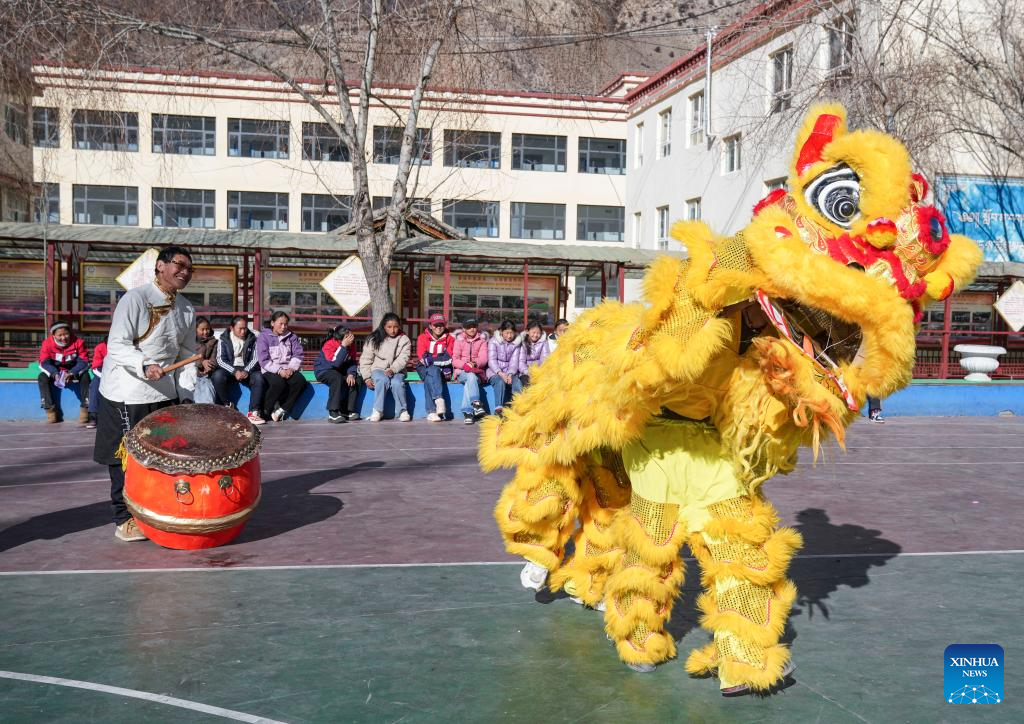
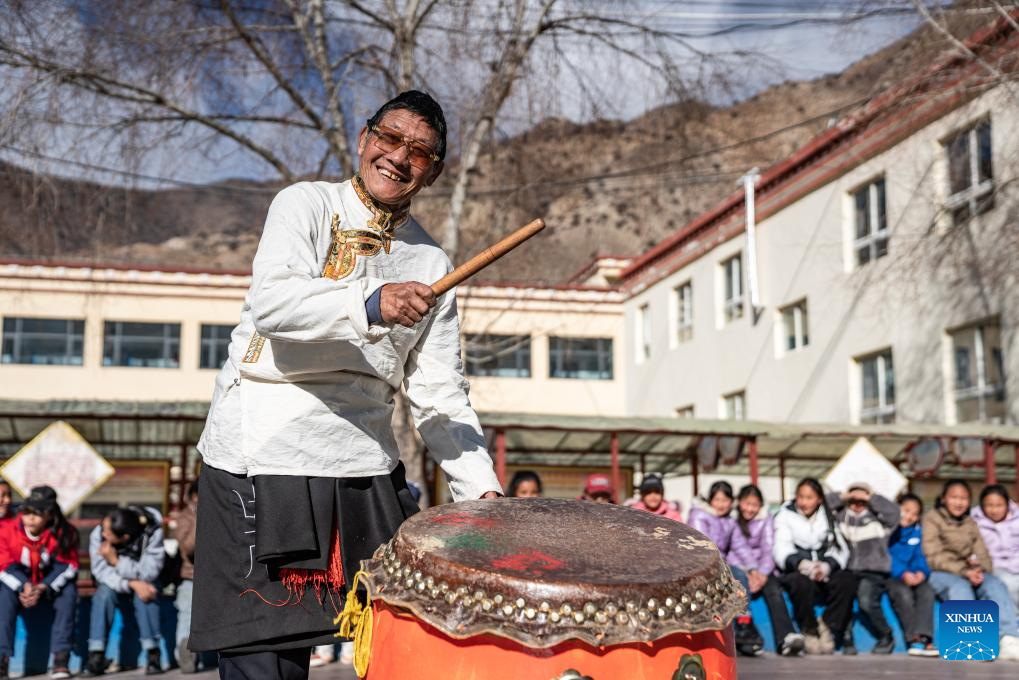
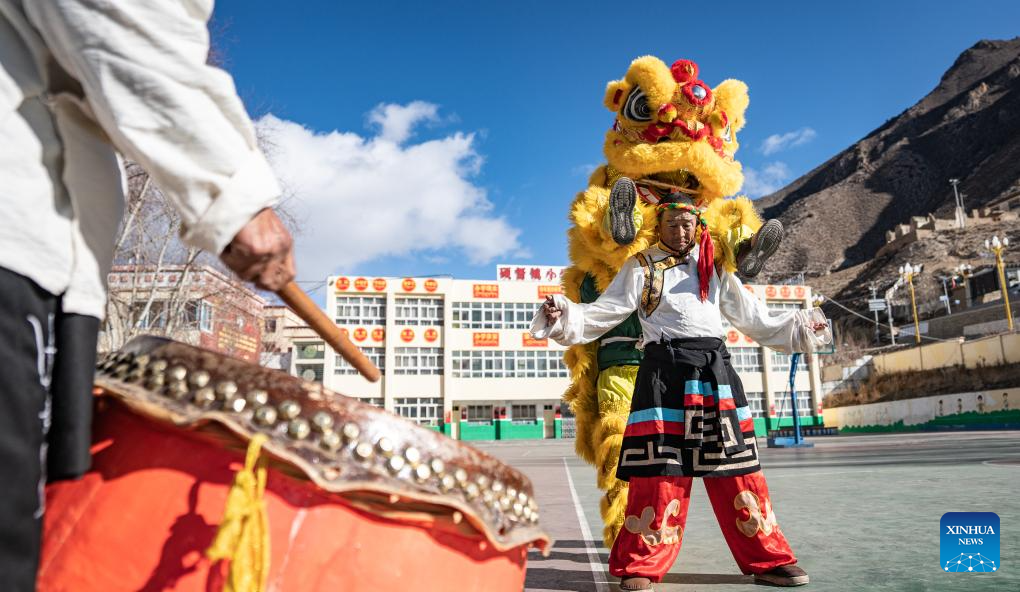
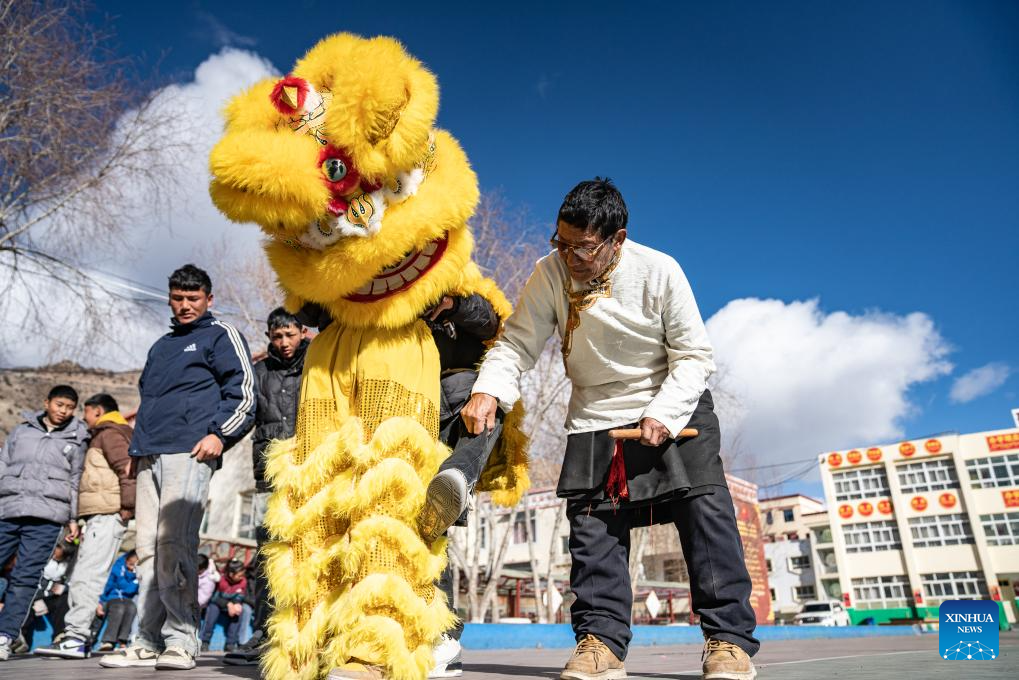

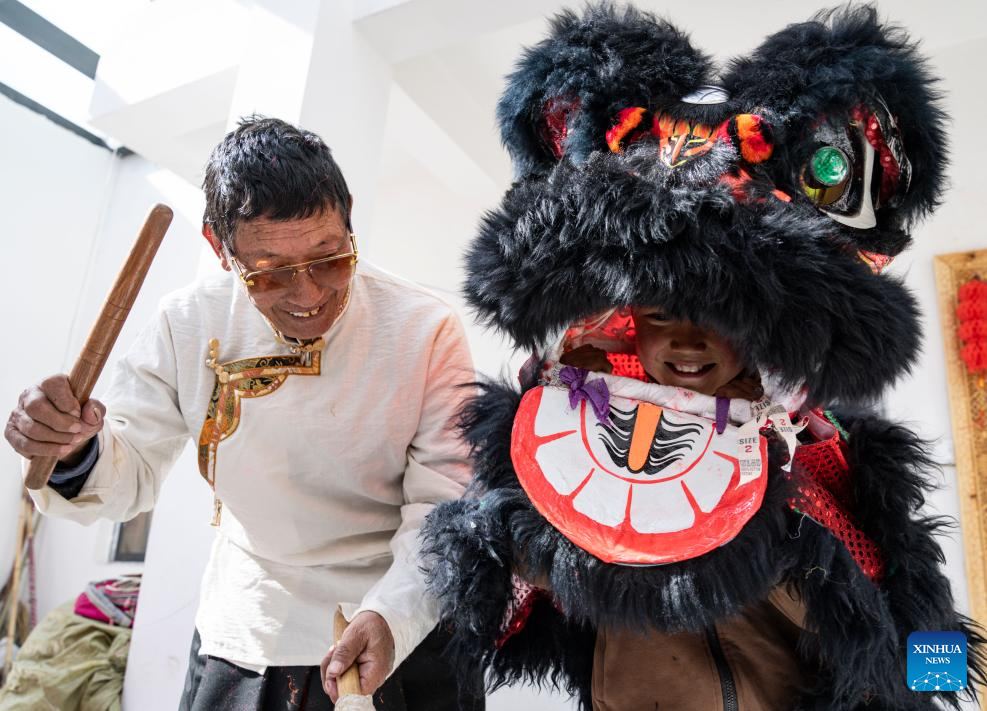
Pic story of inheritor of Xobando lion dance art in China's Xizang
Editor:谭婕倪
Source:Xinhua
Updated:2024-01-22 14:19:44
Source:Xinhua
Updated:2024-01-22 14:19:44
Special
Contact
Welcome to English Channel! Any suggestion, welcome.Tel:0731-82965627
lisl@rednet.cn
zhouqian@rednet.cn











